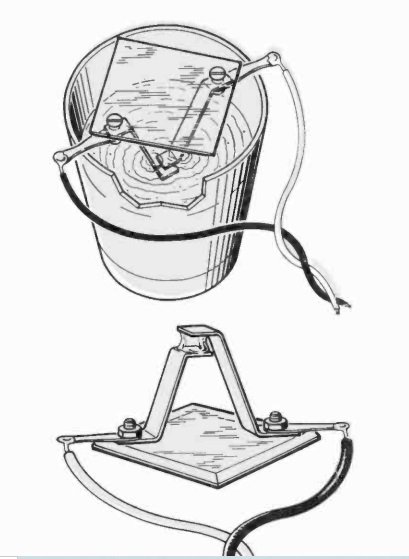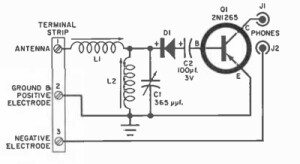 If Junior is looking for a project for the science fair, a good standby is always making a battery out of materials found around the house. We’ve previously covered the idea in more detail, but the October 1961 issue of Popular Electronics shows a slight variation. All of these are a variation of Allesandro Volta‘s Voltaic pile from 1799, and are easy to recreate.
If Junior is looking for a project for the science fair, a good standby is always making a battery out of materials found around the house. We’ve previously covered the idea in more detail, but the October 1961 issue of Popular Electronics shows a slight variation. All of these are a variation of Allesandro Volta‘s Voltaic pile from 1799, and are easy to recreate.
This one uses strips of copper and aluminum. The mechanical details are unimportant, so you don’t have to worry about the exact shape. The aluminum can be cut from a soda can, although these have a plastic lining on one side and paint on the other, so the aluminum will need to be sanded. If you don’t have a strip of copper available, a piece of copper wire, or any kind of copper hardware found at your local hardware store will work fine.
The 1961 article uses the battery to power a one-transistor radio. As you can see below, it consists of a crystal set with one germanium transistor amplifying the audio. But to show that the battery is working, a light emitting diode would work just fine. Polarity is important, so if it doesn’t light at first, simply reverse it in the circuit. In this battery, the copper is positive, and the aluminum is negative. It will come to life when the two electrodes are placed in salt water. As shown in this picture, you can carefully put one drop between the electrodes, or simply place it upside down in a glass of salt water.
Junior’s experiment for the science fair can be to see how much salt in the water results in the brightest glow. Or he or she can try different electrolytes, such as bleach or lemon juice. Very little can go wrong, and as long as some liquid is between the two strips, the LED is almost certain to give off a little light.
As we noted previously, the project is very easy with materials found around the house. But for students who want to bypass the procurement process, you can simply go out and buy one of the potato clocks shown at left.
Some links on this page are affiliate links, meaning that this page earns a small commission if you make a purchase after clicking on the link.


